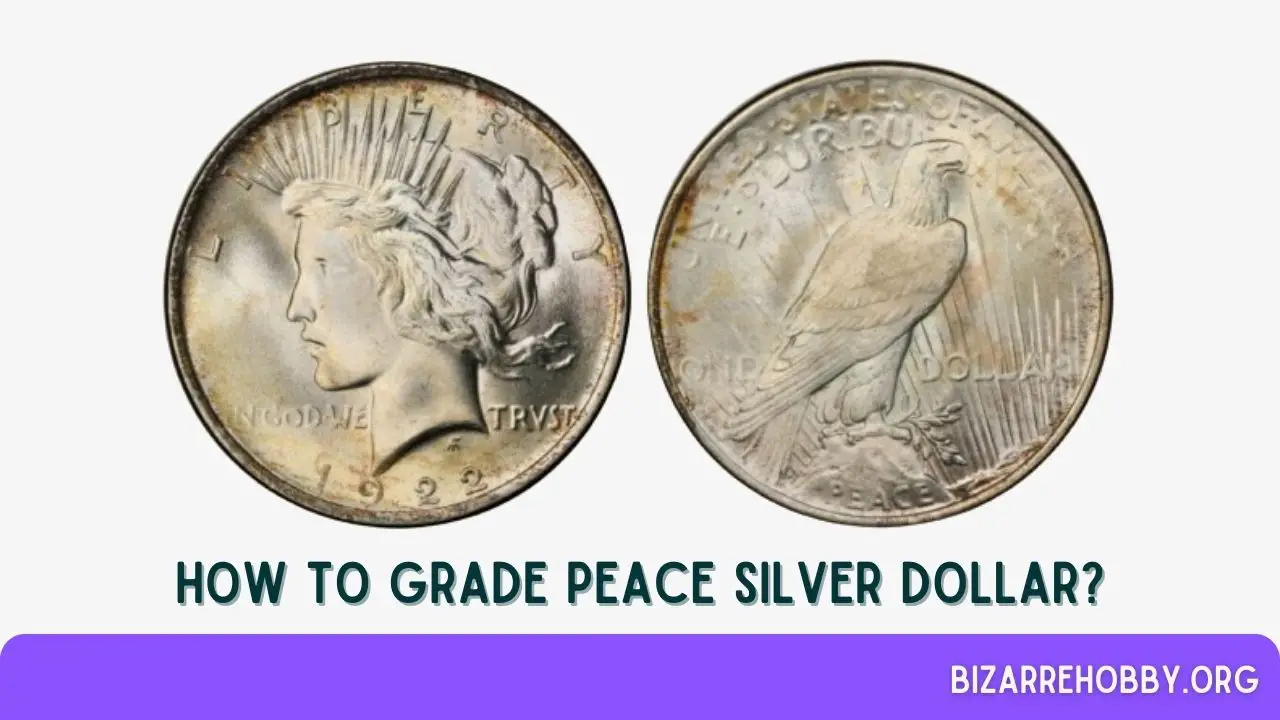Grading Peace Silver Dollars can be a complex task, even for experienced appraisers. These coins are not only unique in their design but also carry significant historical symbolism, having been first minted in 1921 to commemorate the end of World War I and the advent of peace.
Coin grading companies and collectors use the Sheldon grading scale to assess the condition of Peace Silver Dollars. However, certain coins, such as those minted in 1921 (Philadelphia) and 1934 (San Francisco), require special attention due to their unique characteristics. Let’s delve into the grading process.
Table of Contents
Grading Standards For Peace Silver Dollar
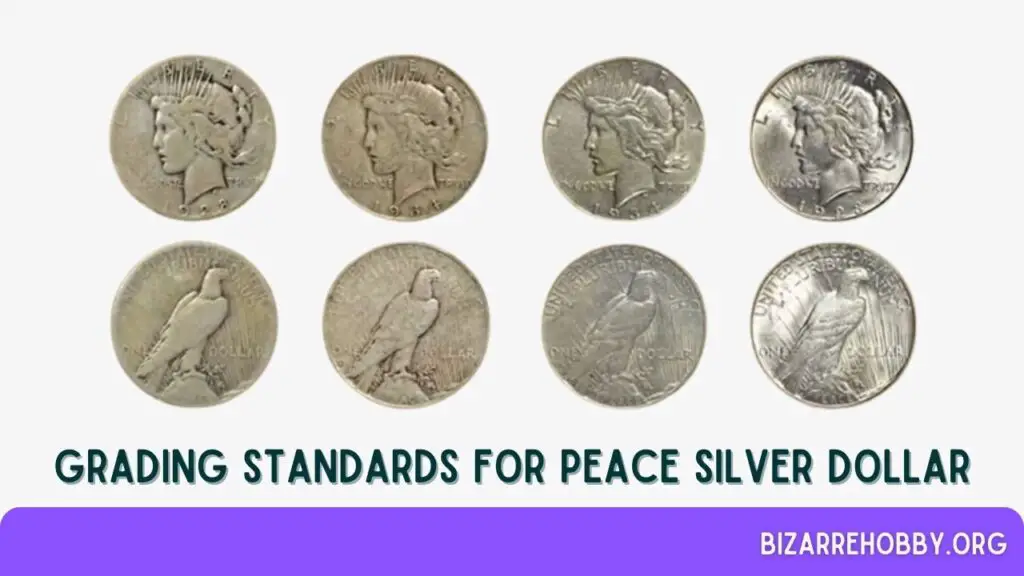
When grading your Peace Silver Dollar, the first step is to categorize it into one of three main groups based on its condition.
1. Circulated Coins: These coins have been in general use and show varying degrees of wear. They are further divided into:
- Non-collectible pieces: These include coins in Poor (P-1), Fair (FR-2), and About Good (AG-3) conditions.
- Collectible pieces: These range from Good (G-4) to Extra Fine (EF-45), with EF-45 being the highest grade typically found in this group.
2. About Uncirculated Coins: These coins have seen limited circulation and exhibit minimal wear. They are graded from AU-50 to AU-59, with the most common grades being:
- About Uncirculated (AU-50)
- Choice About Uncirculated (AU-55 and AU-58)
3. Uncirculated Coins: These coins have never been in circulation and are often referred to as Mint State (MS) coins. Despite not being used, they may have contact marks or bag marks from the minting process. They are graded from MS-60 to MS-70, with specific classifications such as:
- Mint State Basal (MS-60)
- Mint State Acceptable (MS-63)
- Mint State Choice (MS-65)
- Mint State Premium Quality (MS-68)
- Mint State Almost Perfect (MS-69)
- Mint State Perfect (MS-70)
By understanding these grading standards, you can more accurately assess the condition of your Peace Silver Dollar and determine its value. This guide aims to provide you with the essential knowledge needed to grade your coins effectively, ensuring you make informed decisions whether you’re a collector or an investor.
Understanding Grades for Peace Silver Dollar
Peace Silver Dollars are cherished not only for their historical significance but also for their relative affordability due to their abundance in the market. When embarking on a new collection, the primary objective should be to acquire the highest quality specimens available.
Typically, Peace Silver Dollars from the 1920s are found in superior grades. However, coins minted in San Francisco in 1934 are notably rare in uncirculated condition, making them highly valuable and sought after by collectors.
When grading these coins, it’s crucial to exercise caution. Differentiating between a pristine Peace Dollar and one that has experienced minimal circulation can be quite challenging. This distinction is vital for accurate grading and valuation.
| Sheldon Scale | Grade |
|---|---|
| 1 | Basal State-1 |
| 2 | Fair |
| 3 | Very Fair |
| 4, 5, 6 | Good |
| 7, 8, 10 | Very Good |
| 12, 15 | Fine |
| 20, 30 | Very Fine |
| 40 | Extremely Fine |
| 50 | About Uncirculated |
| 60 | Mint State |
| 65 | Mint State |
| 70 | Mint State |
Details of Peace Silver Dollar
| Specification | Detail |
|---|---|
| Face Value | One Dollar ($1) |
| Compound | Silver |
| Coin Weight | 0.8594 Troy Ounces (26.73 g) |
| Coin Diameter | 1.50 Inches (38.11 mm) |
| Coin Thickness | 0.0945 Inches (2.40 mm) |
How to Grade Peace Silver Dollar?
The Peace Silver Dollar is one of the most iconic and collectible American coins. Despite their abundance, even mint state pieces can be relatively affordable. Accurate grading is essential to determine their true value. Let’s delve into the grading process.
1. About Good (AG 3)
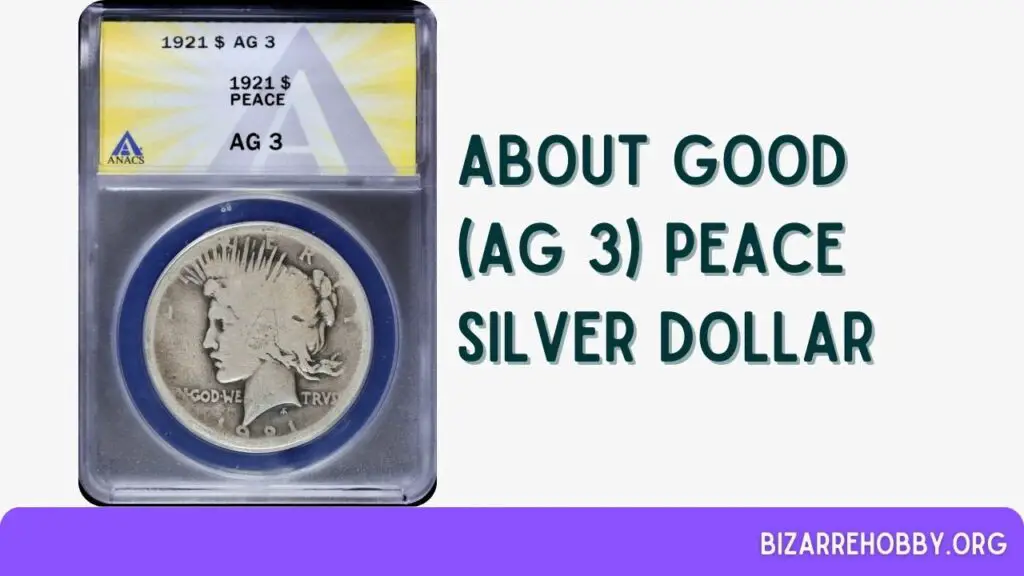
Peace Silver Dollar About Good (AG 3) – These coins are heavily worn, with most details barely visible. The date is usually the only clear feature, while the rim merges with the inscriptions.
- Obverse: Lady Liberty’s head is smooth with a rough outline. The crown is faint, and the hair strands are indistinguishable.
- Reverse: The eagle is merely an outline with no details, and the word “PEACE” is worn away. Inscriptions blend into the flattened rim.
2. Good (G 4)
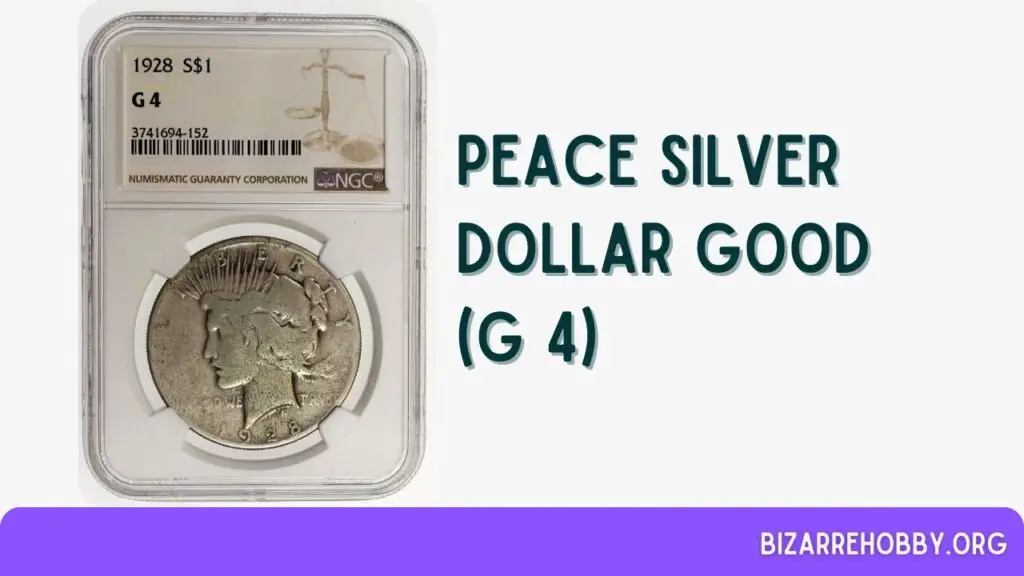
Peace Silver Dollar Good (G 4) – Despite heavy wear, the outlines of Lady Liberty and the eagle are recognizable. All inscriptions are legible, and the date is clear. These coins are typically valued for their silver content.
- Obverse: Lady Liberty is identifiable, but the coin shows significant wear and scratches. The hair has a few distinct strands, and the crown spikes are split.
- Reverse: The eagle is an outline with no feather details. The word “PEACE” is faded, and the sun rays are still visible. The olive branch below the eagle’s claws is noticeable.
3. Very Good (VG 10, VG 8, and VG)
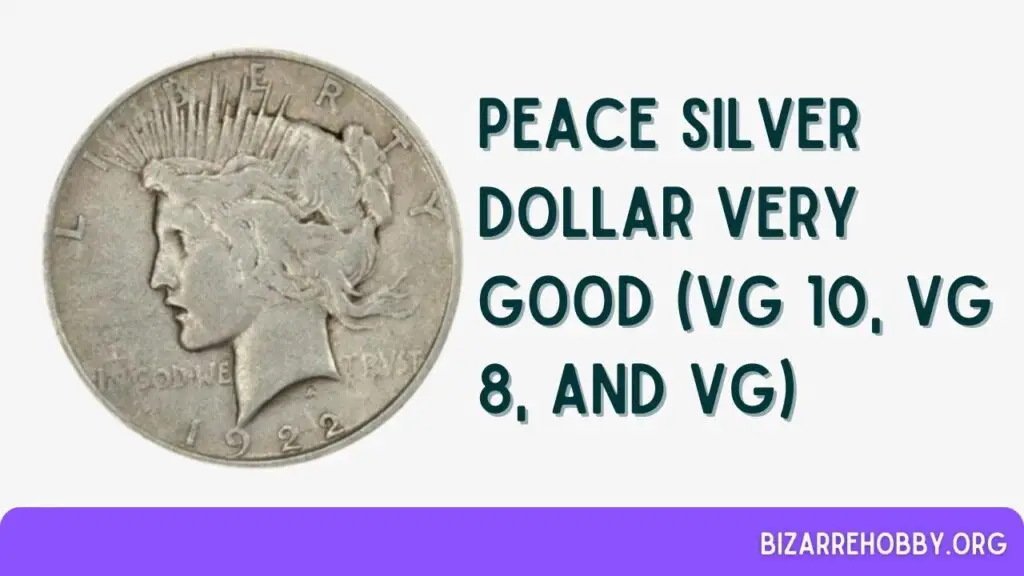
Peace Silver Dollar Very Good – Coins in this grade are better preserved but still show significant wear. Major design elements are defined but flat.
- Obverse: Lady Liberty’s hairline is visible, though worn. The eye is recognizable, and all inscriptions and the date are clear but may be faded.
- Reverse: The word “PEACE” is partially visible, and the rim is mostly intact. The eagle’s body and head show the first hints of detail.
4. Fine (F 15, F 12, and F)
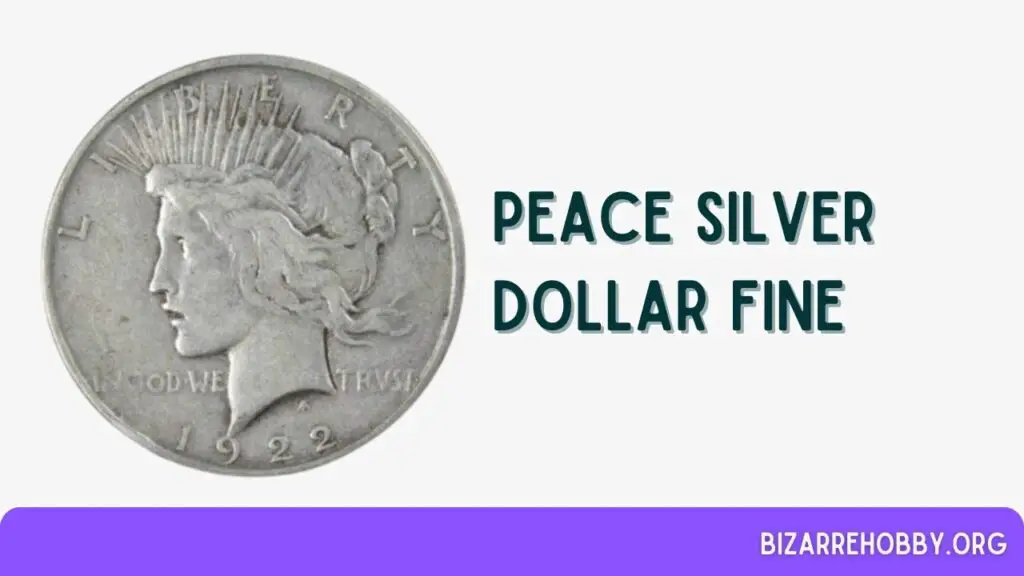
Peace Silver Dollar Fine – These coins exhibit even wear, with all inscriptions and the date readable. Noticeable wear is present, but some details remain.
- Obverse: Lady Liberty’s hair waves are recognizable, though lacking distinct details. The rays are smooth with wear, and the bun shows roundness and separation. All inscriptions are legible.
- Reverse: The eagle is identifiable, but original details are missing. The twig is visible but smooth, and the letterings are readable but weak. Sun rays on the left are faded.
5. Very Fine (VF 35, VF 30, VF 25, VF 20, and VF)
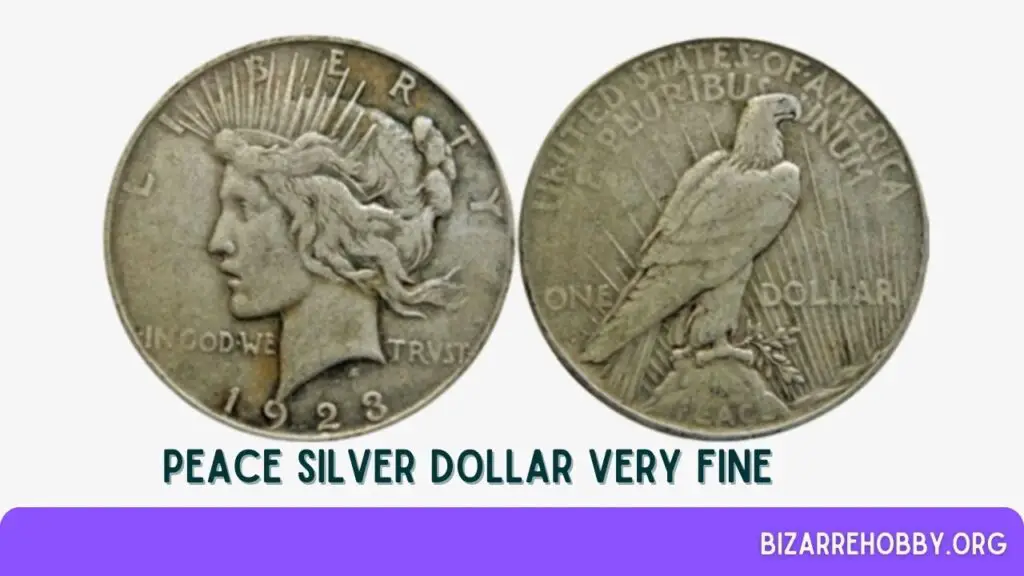
Peace Silver Dollar Very Fine – Moderate wear is visible, primarily on the highest design points. These coins are still attractive to collectors.
- Obverse: Lady Liberty’s hair strands are mostly separated. Despite missing details, the obverse remains appealing. The motto, date, and “LIBERTY” are well-defined.
- Reverse: The eagle’s feathers are visible, especially on the wing and leg. The word “PEACE” is complete, and other inscriptions are readable but slightly faded.
6. Extra Fine (EF 40 and EF 45)

Peace Silver Dollar Extra Fine – These coins show slight wear on high points but retain sharp details and inscriptions. Some mint luster may be present.
- Obverse: Hair strands around Lady Liberty’s face are strong but partially worn. A small flattened area above her eye and a lightly worn lower neck edge are visible. Sun rays are sharp with traces of mint luster.
- Reverse: Wing feathers are mostly visible but smooth. The top of the eagle’s wing is the most worn part. Letterings are sharp, and subtle details are apparent.
7. About Uncirculated (AU 58, AU 55, and AU 50)

Peace Silver Dollar About Uncirculated – These coins are nearly perfect, with minimal wear and a few scratches. Mint luster is almost complete.
- Obverse: Lady Liberty’s design is well-preserved, with slight wear on her cheek and hair above her forehead. The original mint luster covers most of the surface.
- Reverse: The eagle’s feathers and inscriptions are well-defined, with minor wear on the top feathers of the wing.
8. Mint State (from MS 60 to MS 70)
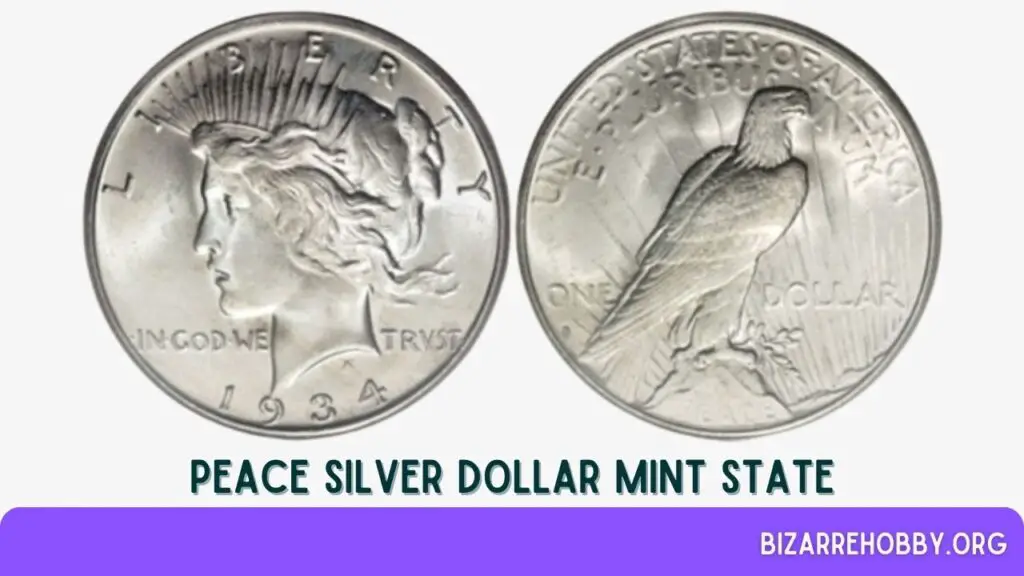
Peace Silver Dollar Mint State – These coins are virtually flawless. The difference between MS 60 and MS 70 lies in the presence of bag marks and minute details.
- Obverse and Reverse: Coins in mint state appear nearly identical at first glance, requiring professional skills to distinguish subtle differences. These tiny variations can significantly impact their value.
Final Thoughts
Grading Peace Silver Dollars is straightforward due to the standardized grading scale used by numismatists. However, some coins, like the 1934 S dollars, are exceptionally rare in mint state, making them highly prized collectibles.
